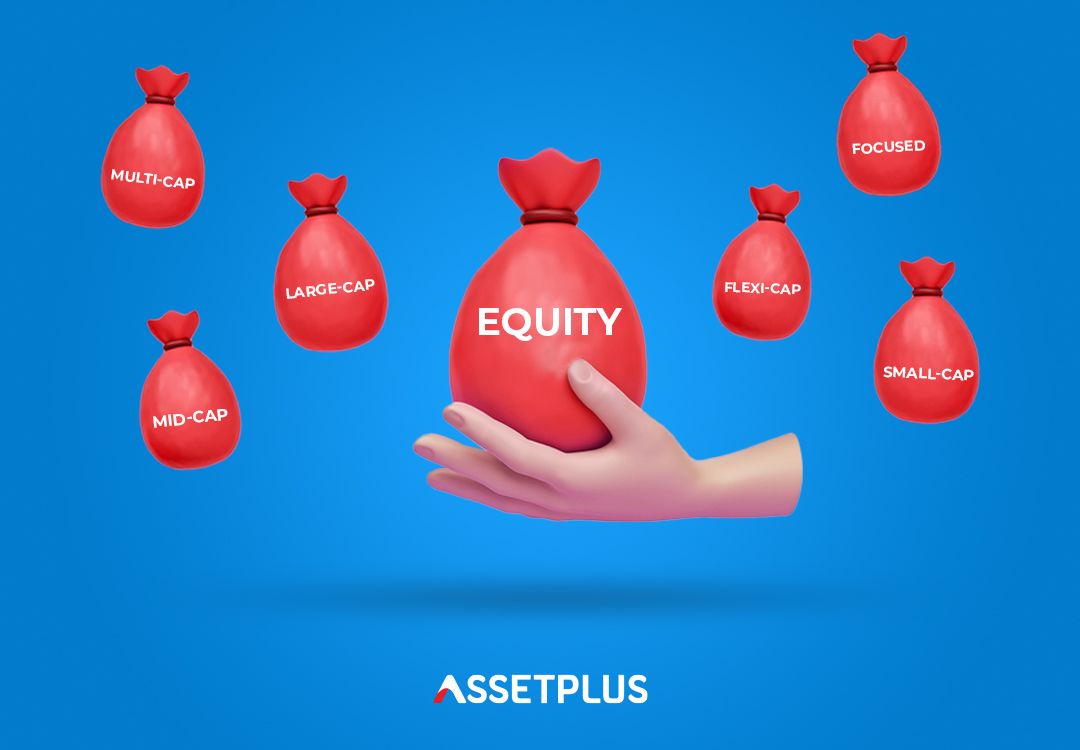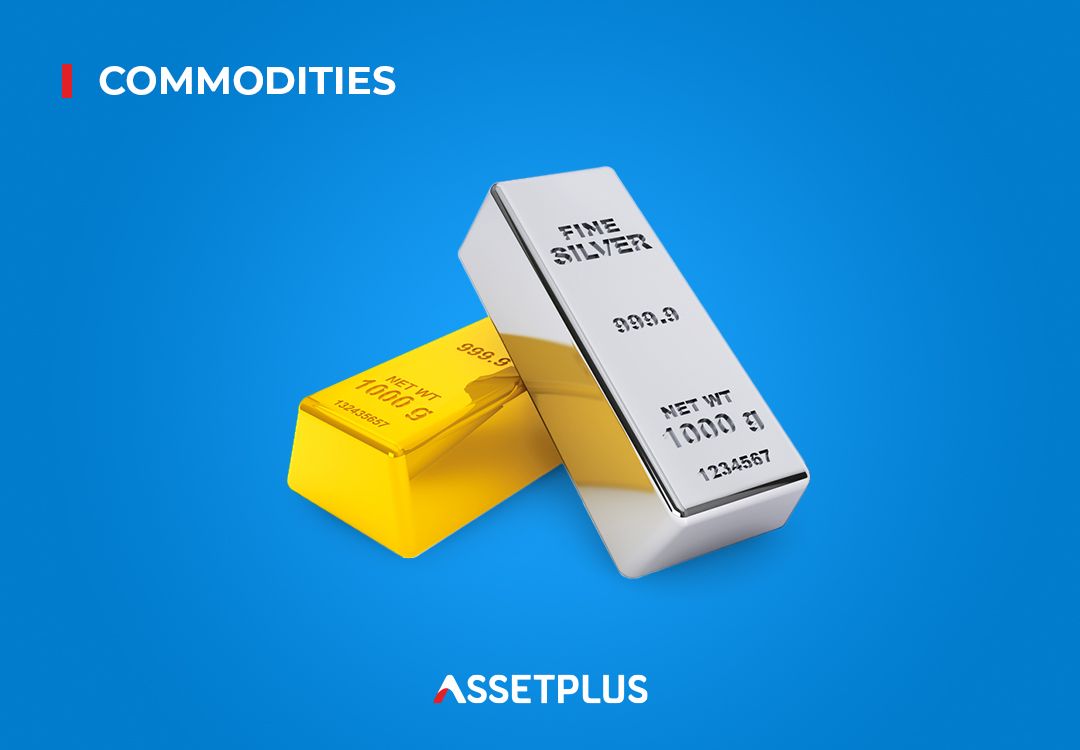Mutual Fund is an investment product that caters to all segments of investors based on their needs and requirements. It is a single product with multiple uses as it invests across various asset classes to fulfill distinct needs. It can be as simple as planning for a vacation to achieving a major life goal such as retirement. Primarily, Mutual Fund is one of the most effective tools to create wealth in the long run and also sustain wealth once it is built.
Broadly, there are 4 Asset classes in which Mutual Funds invest - equity, debt, commodities, and REIT.
Equity:
The most popular asset class by far when it comes to investing in mutual funds. Mutual Funds invest across several companies in the stock market with periodic portfolio reviews and rebalancing to optimize the best possible returns. Equity Mutual Funds offer long-term capital appreciation with volatility in the short-term to medium-term. There are various types of Equity Mutual Funds in which investors can invest their money. The wide variety of categories and schemes makes it important to understand what they signify.

- Large-Cap: Listed Stocks ranging from 1 to 100 on India's National/Bombay Stock Exchange(NSE/BSE) are classified as large-caps. They have the highest liquidity and largest market capitalization. They are also known as Blue-chips. At least 80% of the investments must be in large-cap stocks to qualify as a large-cap mutual fund.
- Mid-Cap: Listed stocks ranging from 101 to 250 on India’s National/Bombay Stock Exchange(NSE/BSE) are classified as mid-caps. They have moderate liquidity and higher risk than large-cap companies. At least 65% of the investments must be in mid-cap stocks to qualify as a mid-cap mutual fund.
- Small-Cap: Listed stocks ranging from 251 to 500 on India's National/Bombay Stock Exchange(NSE/BSE) are classified as small-caps. They have the lowest liquidity and highest risk compared to large-caps and mid-caps. At least 65% of the investments must be in small-cap stocks to qualify as a small-cap mutual fund.
- Flexi-cap: A category that can invest across all market caps without any restrictions or constraints without any defined proportion to any of the market caps as per fund manager discretion.
- Multi-cap: A category that needs to invest a minimum of 25% in large-caps, 25% in mid-caps, and 25% in small-caps. The remaining 25% of the portfolio can be in any market cap as per the fund manager's discretion.
- Focused: A category that is curtailed to a maximum of 30 stocks in its portfolio is a focused fund. It is diversified across sectors but is concentrated as it cannot exceed 30 stocks.
- Large and Mid-cap: A category that needs to invest a minimum of 35% in large-caps and a minimum of 35% in mid-caps. The remaining 30% can be in any market cap as per the fund manager's discretion.
- Sectoral: A category that invests only in a specific sector of the stock market. It is susceptible to high concentration risk and lacks diversification as it focuses on just one particular sector. For example, a Pharma fund would invest only in the pharmaceutical industry and would not invest in other sectors.
- Thematic: A category that invests across a broad theme consisting of sectors that complement/supplement one another for a bigger theme. For example, a theme like MNC(Multinational companies) will have MNC stocks from all major sectors.
- Value/Contra: A category that invests in stocks that are either in a turnaround phase or are relatively undervalued when equated with the broad-based indices.
- Index: A category that replicates the benchmark/index. The portfolio and proportion of each stock in the index fund are the same as its underlying benchmark.
- International: A category that invests in foreign stock markets to capture global companies and their growth.
Debt:
A financial instrument that consists of treasury bills, bonds, deposits, and other fixed-income securities. It provides stability and safety, which makes it a suitable investment product for short-term requirements. Debt Mutual Funds are majorly used for capital protection and wealth preservation. Some of the common ones are as follows:

- Less than 1 year: Categories like Overnight, Liquid, Ultra-short, Low Duration, and Money market mutual funds invest in Debt securities like treasury bills and bonds, which have their maturity in less than 1 year.
- 1-4 years: Categories like Short duration funds invest in debt securities maturing between 1-3 years, while Medium duration funds invest in debt securities maturing between 3-4 years.
- Gilt Fund: A category of debt funds that invest in government securities that have the highest levels of credit safety.
- Dynamic Bond Fund: A category that can invest across securities with differing maturities to make the most of interest rates fluctuations.
- Corporate Bond Fund: A category that invests in a mixed variety of high-rated corporate bonds.
- Banking and PSU Debt Fund: A category that purely focuses on Debt instruments issued by Banks, Public Sector Undertakings, and other Public Financial Institutions.
Commodities:
An asset class that has been used extensively by humankind for various purposes, ranging from raw materials to fashion to investing. Gold and Silver are the top commodities that allow Mutual Fund investors to get exposure by investing in their digital modes.

- Gold: A natural hedge against inflation and performs well when there is lots of uncertainty and pessimism surrounding the markets. In most cases, gold is inversely correlated with Equity.
- Silver: Age-old metal which also displays reverse trends with equity but is extreme volatility, having more fluctuations than gold. Silver is also used as a raw material in various industries creating strong demand.
REIT:
Real Estate Investment Trust, popularly known as REIT, is a new age investment theme in the mutual fund industry that allows investors to invest in a basket of stocks that own real estate like Industrial Parks, Apartments, etc., which generate regular periodic income like rents.

Certain special categories of Mutual Funds that invest across the above-mentioned multiple asset classes in a single fund. There are various types of these funds, with the major ones being Hybrid(Equity+Debt) and Multi-Asset(Equity+Debt+Commodities).
Watch this space for more on the Mutual Fund Series!

